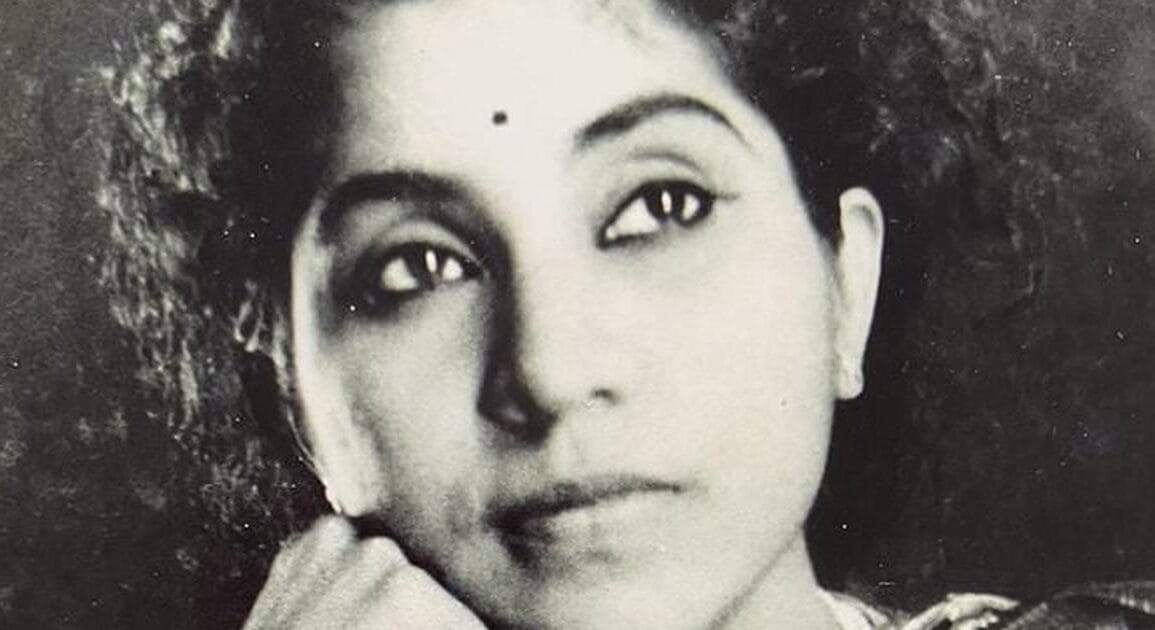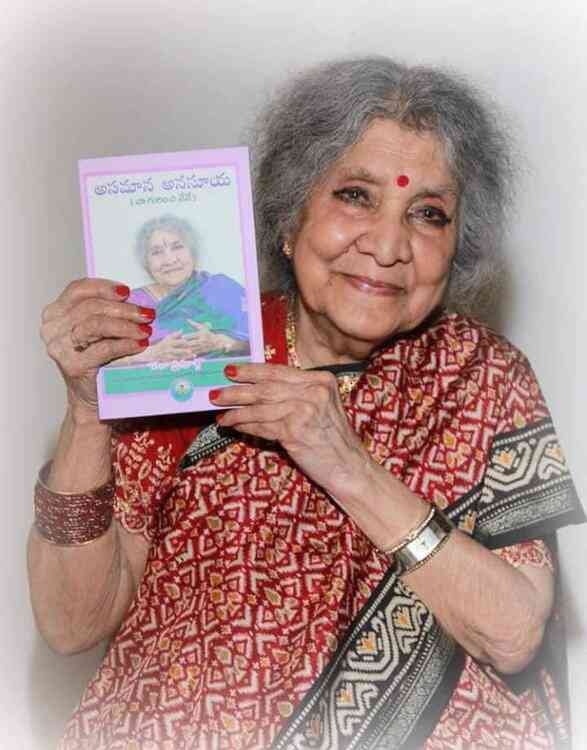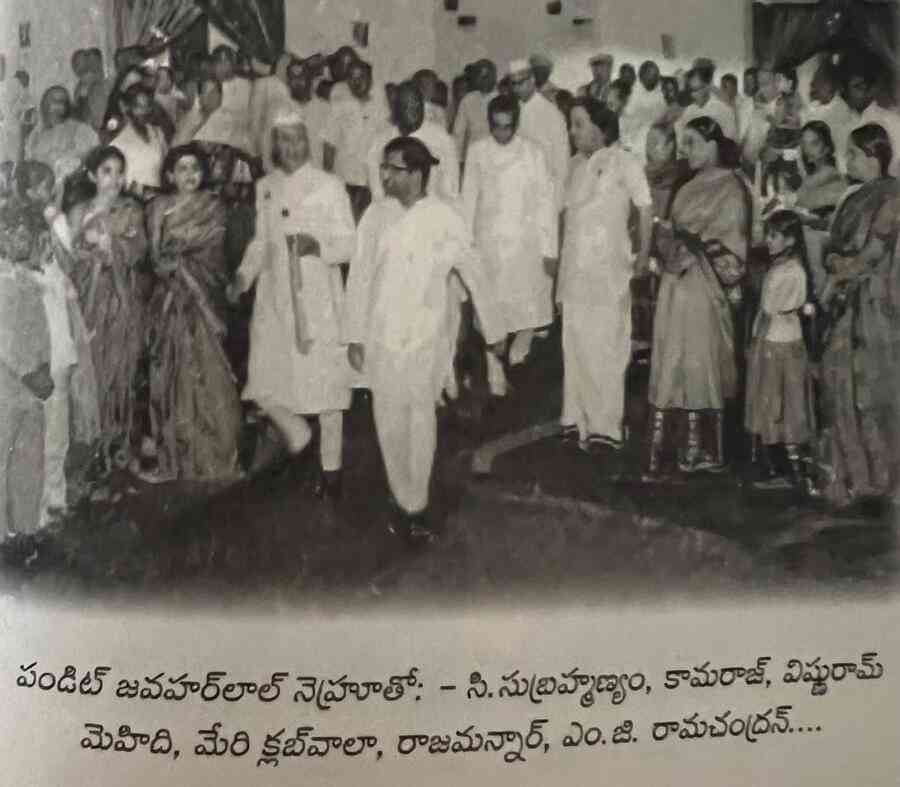A daughter is reviving the memory of an Andhra music trailblazer who was overlooked by history

The sour golugu berries/And shark fish and mullet/When I eat the fish you appear in my dreams/My dark and handsome sweetheart/You bring such a good catch.
In 1938, a delightfully piquant Telugu folk song, titled Golakondoyi, made its debut on All India Radio, and as we would say today, went viral. Entire Telugu-speaking households would tune in, rivetted. The famous dancer Padma Subramanyam recalls even now the song’s saucy lilt. Carnatic vocalist Malladi Suri Babu says he was enthralled.
The voices behind the song were the sisters Vinjamuri Anasuya Devi and Seetha Devi. Anasuya was 18 and Seetha just 15 when they scored the hit but it was clear that they possessed that raw, strong edge of folk singing, but with the polish of Carnatic embellishments.
With the hit, the sisters reached an early milestone in their nine-decade-long musical journey, during which they worked on a singular mission – to collect, sing, notate, document and publish the rich folk music traditions of the then undivided Andhra Pradesh. For the colossal contribution they made, in archiving a neglected and marginalised folk tradition, they did not get the recognition they so richly deserved.
Now, using mostly home interviews and family albums, Anasuya’s daughter Seetha Ratnakar, a former Doordarshan producer, has created a documentary film on the mountainous work the musician did over the 99 years of her life.
Asamana Anasuya, or the inimitable Anasuya, is the title of the singer’s 2015 autobiography and also the name of the documentary. The film is not just about Anasuya’s inimitable life but also her indomitable persona – vivacious, curious and passionate about the earthy flavours of Indian music.
“Folk music was a magnificent obsession with her,” said Rathna Kumar, her daughter and renowned Kuchipudi dancer. “‘There is life in this music,’ she would say, ‘it is inclusive, the heartbeat of mankind.’ And remember, she travelled, recorded and archived music at a time when there was hardly any means of transport, no technology to help, and men dictated terms. I would call her a trailblazer, way, way before her time.”
Anasuya compiled seven books of folk music – light, ritual songs sung every day by people in flawed voices as they ploughed fields, lay roads, or celebrated love, matrimony and festivals. She was among the earliest female film composers and musicologists. She composed for theatre and she set to music the poetry of Andhra’s greatest poets – altogether, a large body of work that was often plagiarised because it fell in the realm of folk.
This understanding of the need to archive cultural material is rare in India because there is little value put on the documentation of the rarer elements of the arts, says Arshiya Sethi of the Kri Foundation that presented the film in Delhi along with the arts non-profit Anugraham.
The impact of her and Seetha’s music on Andhra music history was huge, says veteran music and dance scholar VAK Ranga Rao.
“I have been collecting gramophone records since my childhood,” Rao said. “I found two basic non-film records by Seetha, Anasuya, one with Madhoodayamlo manchi muhurtham and Jabilli vastunnadu and another featuring Nuvvoo nenoo kalasi and Golakondoyi, both on the not very frequently seen Young India label. This was in 1947, just after 15th of August. The label’s earlier drab colouring had been changed to one incorporating a small flag like our tricolour, obviously honouring the day of Independence. I found these songs, and their singing, fascinatingly unlike anything I heard before. Seetha sang in a lower key than Anasuya, and as I remember, both sang together all the time.”

Rich legacy
The story of how a Carnatic musician turned into a folk evangelist spanned some of the most interesting decades of cultural history. The early days of her career was when radio had just arrived, silent cinema with live orchestra accompaniment turned talkie, theatre forms changed and the nationalist fervour seeped through almost all arts.
“To understand the context of my mother’s work with folk music, we must remember that she started at a time when it was simply not done for anyone from an elite home, and certainly not women, to sing folk music,” said Ratnakar. “At the most one could sing a padam or a javali, but folk? That was considered the music of the poor, rural, marginalised people.”
Anasuya was born in 1920 to a progressive family of artistes and litterateurs from Kakinada in coastal Andhra Pradesh. Her mother, Vinjamoori Venkataratnamma, edited a staunchly reformist women’s magazine in Telugu, Anasuya, and her father VVL Narasimha Rao was an acclaimed theatre actor.
At age five, Anasuya began learning Carnatic music under Sonti Lachiah and later became a student of Munuganty Venkata Rao, the guru of the legendary Voleti Venkateswarlu. Kakinada was known for its rich folk culture: it boasted the first music association and hall in the region, the Saraswati Gana Sabha, which was set up in 1905 and where stalwarts like Kashi Bai and Roshanara Begum from Varanasi and Bade Ghulam Ali Khan had performed.

But Anasuya was too curious to be reined in by the Carnatic straightjacket. “The harmonium was my life,” she recalls in the film, her stunning kohl-ringed grey eyes twinkling. “I would beg my guru to teach me to play on the side. At the screening of silent movies, I would watch the harmonium being played live on stage, and was fascinated by how it could show the emotions appearing on the screen: now sad, now warrior-like. But I had no opportunities to play. So at home, I would insist on accompanying on my harmonium as the priests who came home for rituals chanted. Till one day, when I asked to play along with a funeral prayer. For me, the saddest day was when AIR banned the harmonium.”
Anasuya’s maternal roots lay in Pithapuram, a small town that was a long bullock cart ride from Kakinada. Visits to relatives meant hours trundling along rural paths listening to people sing as they went about their day. Anasuya found their buoyancy and rhythm irresistible. She started, at age seven, collecting these songs, learning them, singing and later notating them.
At age eight, at a local “health week” competition for children, her mother cajoled Anasuya into singing the pious Thyagaraja kriti, Nidhi Chala Sukhama. But Anasuya had heard that very morning the risqué Kshetrayya padam Mogudochi Pilachedu on a neighbour’s gramophone. She went ahead and sang it to stunned judges and then blithely followed it up with Thyagraja kriti.
Among the amused and impressed audience was singer-lyricist Valluri Jagannatha Rao. Noticing the ease with which she could summon the rustic timber in her voice, he took her to Chennai – family in tow – to record Ayyo koyyoda, a “comic” Telugu song. At eight, the little singer had already become a recorded artiste. “It was actually a folk song and those days folk songs were supposed to be ‘comic’,” she points out in the documentary.
“It was extremely popular and its tune, adapted by music director M Venu, was used for the dance song Eruvaka sagaloi in the Telugu film Rojulu Marayi, which introduced Waheeda Rehman to the screen,” said Ranga Rao. “Believe it or not, this tune was lifted by SD Burman for Dekhne mein bhola hai for Bambai ka Babu.”
By the time they were in their pre-teens, the sisters, popularly known as Seetha-Anasuya, were doing public concerts. Their repertoire was mostly folk, sung with an open throat and true to regional accents and vocabulary, but they were also known for their light songs based largely on the poetry of their maternal uncle, the great Devulapalli Krishnasastri. The sisters became the toast of the cultural circuit and, at the same time, were in huge demand for weddings and big family events.
Musical switch
Though folk is often placed at the last rung of the musical hierarchy, the sisters gave it the kind of status classical and popular music gets. “I first heard Anasuya at Elluru when I was 10,” said Malladi Suri Babu. “She and Seetha were singing at an auditorium preserved for classical music. The other musicians were Carnatic stalwarts like DK Pattammal and Maharajapuram Santhanam. You can imagine how valued their music was. They were wonderful musicians, pitch perfect, their folk songs also influenced by gamakas and other embellishments you see in classical music. There was verve and melody.”
Here is a folk song they composed, Kondandori, whose popularity has enjoyed a surge of popularity for its philosophical undertones:
By the river flowing near the hills, three farmers were ploughing/One didn’t have a yoke, the other didn’t have an ox/With neither a yoke nor an ox they had a harvest.
The switch from pure classical did make the family a little uneasy. “My father would insist we begin with kirtanas to show our classical knowledge first and then we could sing thumri or padam or javali and then folk,” Anasuya recalls in the film.
But there was no denying it – it was the unique folk/light music of Seetha-Anasuya that the people clamoured for. Carnatic great Balamurali Krishna recalls the stiff competition the girls gave him as a child prodigy. “At big galas, I would think the crowds had landed up to watch me and I would then realise they were waiting for Seetha-Anasuya,” he says in the documentary. “But I was thrilled they stayed on to watch me.”
Soon the sisters switched to full-scale folk concerts, becoming cult figures in the Telugu community. At programmes hosted by Andhra associations everywhere, people would go crazy when they sang Mokkajona, their signature song. “My sister and I saw this as children,” said Ratnakar.
Anasuya was asked to compose in the folk idiom for theatre, cinema and recording companies. Her collection of these songs, duly notated, has been sung for record labels by popular playback singers like SP Balasubramaniam and S Janaki. Balamurali Krishna sang for her in the Kannada movie Mahatma Kabir.
Anasuya briefly joined All India Radio as a composer in 1939 at age 19. AIR, in its early decades, had the mandate to showcase Indian folk and classical music and since these were days before Bollywood swamped the scene, daily slots were reserved for all forms, including original “light music”.
Marriage and five children brought a small pause in Anasuya’s pursuit. “My father was insistent that she take us wherever she went for concerts, so we would tag along and, in the process, ended up learning every single song of hers,” recalled Rathna Kumar, who became a Kuchipudi prodigy with a hectic performance schedule. “We would travel for miles to get to venues and along the way we had to stop a dozen times so she could ask every passing farmer, worker for folk songs.”
With children moving to the US and early widowhood, Anasuya left the country in 1990. Her decades there were spent collating all she had collected, publishing and teaching the Telugu diaspora. Trips to India usually featured a recording of her works by singers for various labels. Till she was 90, she kept the creative spark alive, Ratnakar recalls.
Anasuya was a always radiant presence, dressed in brilliant silks, coordinated bindis flaring on her forehead, flowers in hair, eyes kohled and a corona of unruly hair framing her face. Her children say her last wish was: “When I go, my harmonium should be at my head, two electronic tanpuras playing on either side. No one should cry…Every time you sit together and share a laugh, think of me once, sing my song once.” And that is precisely how she went.
This article first appeared on Scroll.in.




